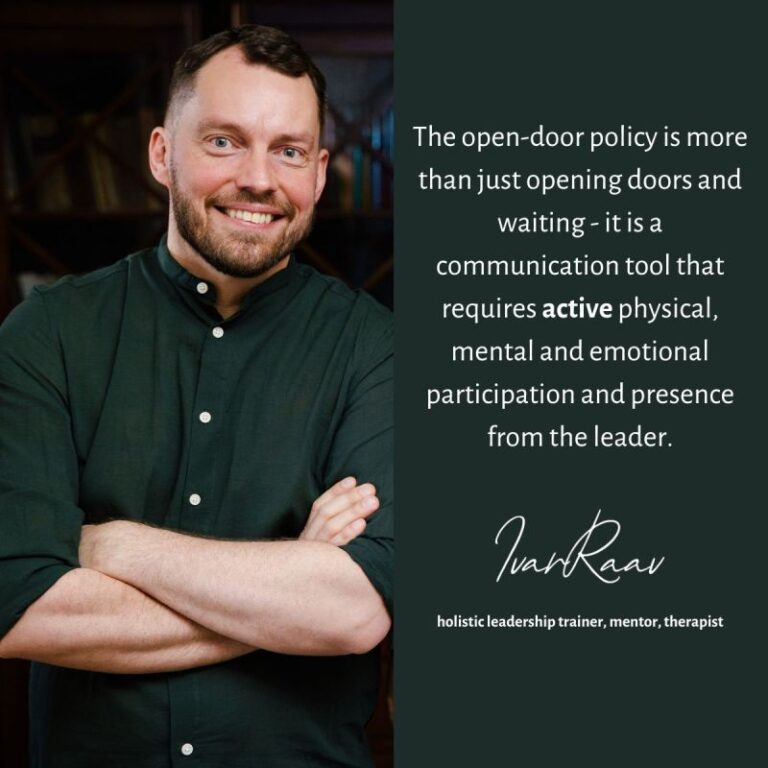𝐈𝐧 𝐭𝐡𝐞 𝐨𝐩𝐞𝐧-𝐝𝐨𝐨𝐫 𝐩𝐨𝐥𝐢𝐜𝐲, 𝐢𝐭 𝐢𝐬 𝐭𝐡𝐞 𝐥𝐞𝐚𝐝𝐞𝐫’𝐬 𝐫𝐞𝐬𝐩𝐨𝐧𝐬𝐢𝐛𝐢𝐥𝐢𝐭𝐲 𝐭𝐨 𝐬𝐭𝐞𝐩 𝐨𝐮𝐭 𝐟𝐫𝐨𝐦 𝐭𝐡𝐚𝐭 𝐝𝐨𝐨𝐫.
Having worked as a leader for a long time, there has always been a certain sense of distance towards my own boss. Its roots lead very deeply to the relationship with life’s authorities – mother and father. Also, a similar sense of distance exists in people whose parents have been very dominant, and in families where there’s a strong rule to respect those who are “more important, older etc”, and a person’s independence (such as adolescence) has been strongly controlled or suppressed. We all carry this baggage to work, even though we don’t think about it.
One excellent example of this is the “open-door policy”. It should mean that everyone has access to the leader to discuss ideas, concerns, or simply to communicate. But do we really understand what this means and whether everyone utilizes it?
Too often, the open-door policy is understood as a one-sided opportunity – the leader keeps their doors open, expecting employees to come in and share their thoughts. But reality can be much more complex.
The leader’s task is not only to open the doors but also to step out from there. True openness means that the leader does not assume that all people will come to them but actively makes efforts to engage with their team and reach out to them, meaning they step out from their open door. Whether it’s an office door or a figurative boundary around the leader’s desk in an open office.
Why is this so important? Because often those who dare to step into the leader’s office have lower sense of hierarchy, and for them, others’ job titles may not matter much. But among us are also those with higher sense of hierarchy, and they may feel uncomfortable and even if they dare to enter through the open door, they are inwardly timid and try to “get away” quickly. Therefore, if the leader truly wants to ensure that all team members feel equally heard, valued, and noticed, to commit to common goals, it is their duty to step out from their open door.
The leader should also remember that the open-door policy does not only mean that they must be available but also that they should be active listeners and participants. Also, they should be emotionally available. By listening to their team and taking their ideas and concerns seriously, the leader builds trust and encourages an open communication environment.
The open-door policy is more than just opening doors – it is a communication tool that requires active physical, mental and emotional participation and presence from the leader. A leader who steps out from their open door and makes efforts to create an equal and open communication environment is a leader who truly earns the respect and trust of their team, builds a connection between the leader and the employee, and between the employee and the organization and its goals.

